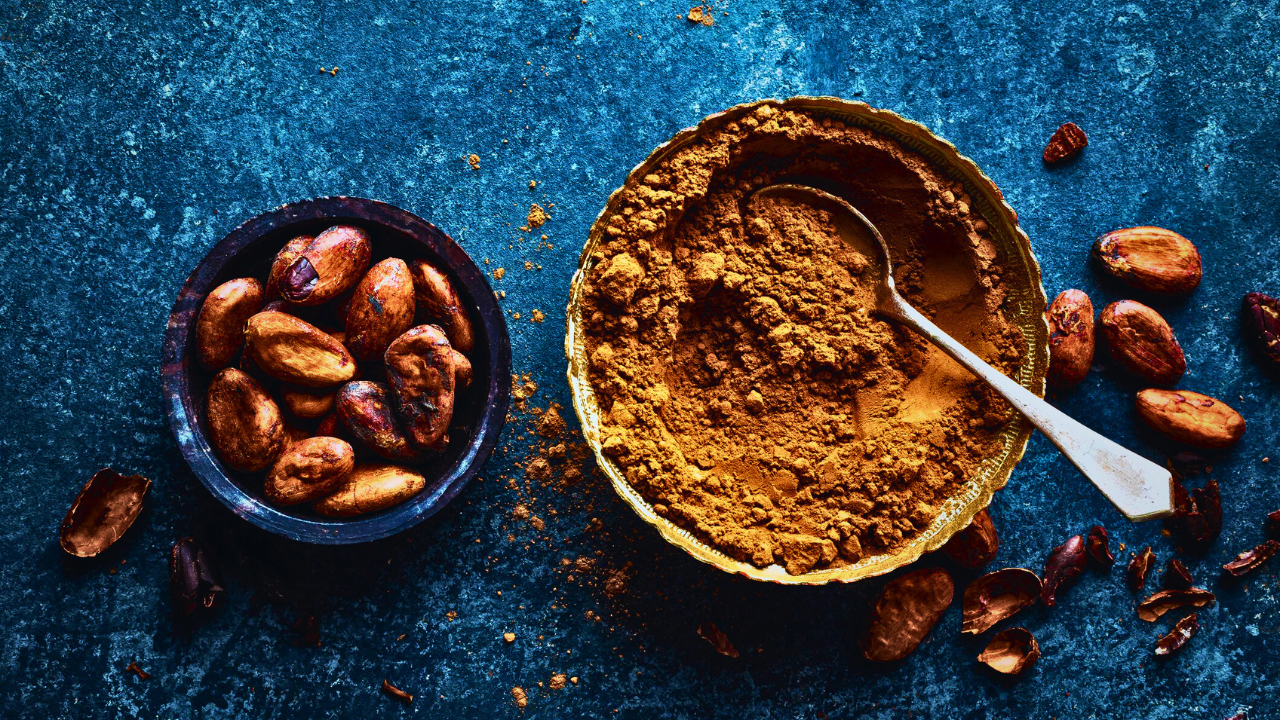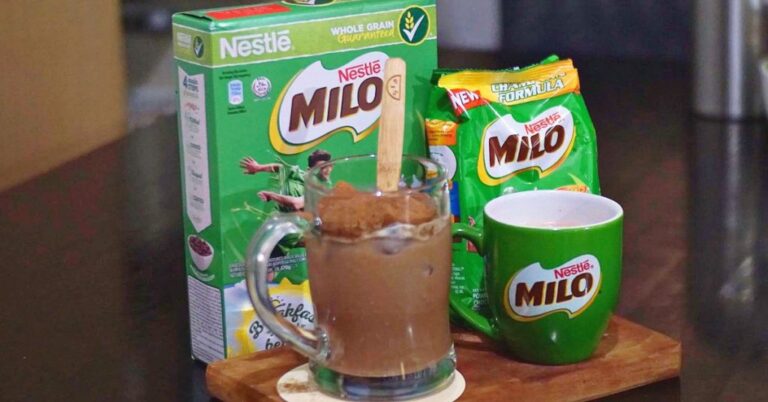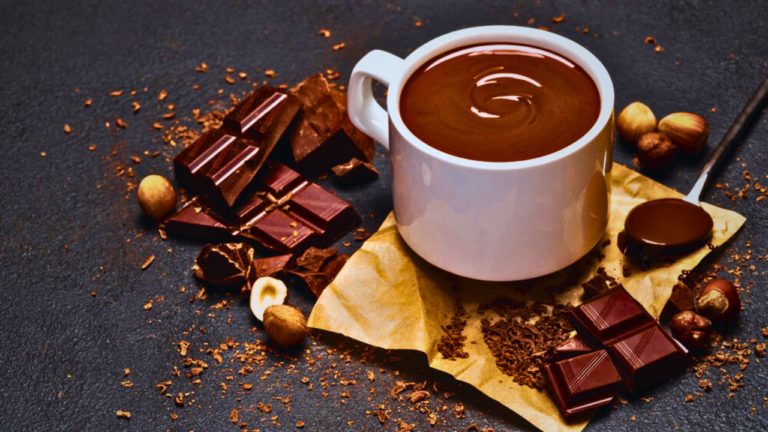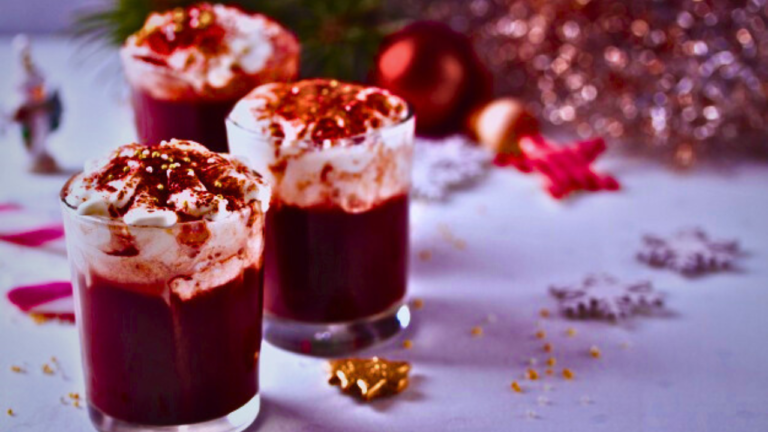Is Hot Chocolate Powder The Same As Cocoa Powder?
Hot chocolate in one hand and a book in the other—isn’t that perfect? There are many aspects to enjoy about hot cocoa, one of which is its cozy warmth. But have you ever stopped to wonder about the foundational ingredients of this drink? You’ve likely heard of both hot chocolate powder and cocoa powder, but are they the same thing? Let’s delve into the distinctions between these two elements of our beloved beverage.
“All you need is love. But a little chocolate now and then doesn’t hurt.” – Charles M. Schulz
Understanding the Basics
Both hot chocolate powder and cocoa powder, at first glance, could be mistaken for the same thing. However, they serve different purposes in the culinary department and have a few key characteristics that set them apart. Let’s kickstart our understanding with some basic definitions:
- Hot Chocolate Powder: A ready-to-use mix that typically contains cocoa powder, sweeteners, and other ingredients to achieve the desired taste and consistency. It’s simply added to hot milk or water to produce hot chocolate.
- Cocoa Powder: A product resulting from the processing of cacao beans, packed with flavor and intensity but devoid of any sweeteners or added flavors. It’s a versatile ingredient used in a range of recipes, from desserts to savory dishes.
Read also: Can I Heat Up Almond Milk For Hot Chocolate?
What are the main ingredients in cocoa powder?
Let’s delve deeper into the main ingredients in cocoa powder. Both hot chocolate powder and cocoa powder have chocolate as their base ingredient. However, what sets the two apart is their formulation.
Typically, pure cocoa powder is comprised of one key ingredient: cocoa solids. This is a derivative of cacao beans, which have been fermented, dried, roasted, and then processed into a paste known as chocolate liquor. The chocolate liquor is subsequently pressed to extract the cocoa butter, leaving behind the dried and ground cocoa solids, which is the cocoa powder we incorporate into our recipes.
However, the ingredient composition varies by the type of cocoa powder. Here’s a quick breakdown:
- Natural Cocoa Powder: This is simply pure cocoa powder. It is notable for its dark color and strong, bitter chocolate flavor.
- Dutch-Processed Cocoa Powder: This variant has been treated with an alkali, a process known as ‘dutching’. This results in a mellow flavor and a darker color, making it a popular choice for desserts and baking.
Regardless of the type, cocoa powder maintains its authenticity by being a single-ingredient product: cocoa. This pure composition accounts for the intense, rich chocolate flavor that it brings to recipes.
How is hot chocolate powder typically used?
Hot chocolate powder, as the name suggests, is most commonly used to make a warm, delicious cup of hot cocoa. Yet, its uses extend far beyond this traditional beverage, making it quite a versatile pantry staple. Let’s take a close look at how hot chocolate powder can enrich your culinary endeavors.
- Traditional Hot Chocolate: Its foremost and most beloved use is in making hot chocolate. Most commercially available hot chocolate powders come with sugar and milk powder already included. All you need to do is add hot water or milk, stir thoroughly, and voilà, your comforting drink is ready.
- Cooking and Baking: Besides its obvious use, hot chocolate powder can be incorporated into various recipes for desserts and baked goods. It’s a worthy addition to cookies, brownies, pancakes, waffles, or shakes. Remember, though, that since it already contains sugar and dairy, you may need to adjust the sweetness or moisture in your recipes accordingly.
- Mocha Coffee: Fancy a homemade mocha without an espresso machine? Stir a spoonful of hot chocolate powder into your regular coffee. It imparts a rich, chocolaty twist to the conventional cup.
- Oatmeal: For a delightful start to the day, mix some hot chocolate powder into your morning oatmeal. It adds a sweet, creamy richness that’ll turn a regular breakfast bowl into a blissful treat.
- Spice Mixes: Believe it or not, hot chocolate powder can bring a unique flavor dimension to spice mixes. Try adding it to your BBQ spice rub or chili mix for a subtle chocolaty undertone.
In conclusion, hot chocolate powder is not just a one-trick pony. Whether you’re whipping up a cozy drink, baking up a storm, or attempting a culinary experiment, this chameleon-like ingredient can definitely elevate your food and beverages. But remember, quality matters. Opt for hot chocolate powders with a higher cocoa percentage for a richer and more intense flavor.
How is cocoa powder typically used?
You might be familiar with cocoa powder as a key player in your favorite decadent dessert recipes. It definitely deserves applause for its role in making a heavenly chocolate cake or brownies. But did you know that cocoa powder isn’t only confined to the baking world? There’s actually a whole lot more it can do! Let’s delve into the various ways cocoa powder typically steps into the spotlight.
- Baking: This is arguably where cocoa powder shines the most, playing a pivotal role in desserts such as cakes, muffins, brownies, and cookies. Its rich, decadent flavor and deep color are instrumental in delivering that intense chocolatey experience that makes these treats so satisfying.
- Beverages: You’re probably already picturing a tempting cup of hot cocoa, aren’t you? But cocoa powder isn’t just about warming winter drinks. You can incorporate it into smoothies for a rich, chocolatey kick without adding heaps of sugar. Some even add a dash to their coffee to transform it into a mocha-style delight.
- Breakfast Foods: A little cocoa powder can transform ordinary breakfast foods into something a tad more special. Consider adding a pinch to your oatmeal or your pancake batter to start your day with a chocolate-filled twist.
- Health Supplements: Because of its high antioxidant properties, cocoa powder is increasing in popularity as an addition to health-focused smoothies and shakes. Just a bit can boost the nutritional content of your diet while adding a pleasing taste.
- Sauces and Rubs: You might find this surprising, but yes, you can use cocoa powder in savory courses too. A bit of cocoa can impart a unique depth and complexity to chili or barbecue sauce. It also works wonders as part of a dry rub on meats, playing off the savory flavors to create something truly unique and delicious.
There you have it! While cocoa powder’s deep and rich chocolate flavor might get all the attention in the dessert scene, it’s actually a much more versatile ingredient than you might have thought. From breakfast foods to health supplements to even savory sauces, cocoa powder sees its fair share of different culinary adventures.
Read also: What’s Good With Hot Chocolate?
What is the difference in taste between hot chocolate powder and cocoa powder?
When it comes to distinguishing flavors between hot chocolate powder and cocoa powder, your sense of taste may notice some key differences. Understanding these variations can significantly affect the outcome of your culinary creations, from confectionery treats to your favorite beverages.
Hot chocolate powder, besides its primary component, cocoa, also contains sugar and milk solids, leading to a sweet and creamy taste. Depending on the brand, additional flavorings like vanilla may also be present, offering a complex and delicately balanced palate.
On the other hand, cocoa powder is often bitter due to its high concentration of pure cocoa, without the addition of sweeteners. There are two main types of cocoa powder: natural and Dutch-processed or alkalized cocoa. The former has a robust, acidic, and intense chocolate flavor, while the Dutch-processed cocoa has a smoother, milder, and less acidic taste.
Remember, cocoa powder adds a deep, rich chocolate flavor to your dishes. In contrast, hot chocolate powder leans more towards a sweet, creamy, and less chocolatey taste. Choosing between the two for your recipes will depend on the flavor profile you are aiming to achieve.
To put it into perspective:
| Hot Chocolate Powder | Cocoa Powder | |
|---|---|---|
| Taste | Sweet, creamy | Bitter, rich |
| Best used in | Beverages | Baking, cooking |
In a nutshell, both hot chocolate powder and cocoa powder offer enjoyable culinary experiences. Whether you fancy a cup of creamy hot chocolate to warm your body or a brownie that emphasizes a strong, rich cocoa flavor, the choice is all yours to make!
Conclusion
At first blush, you might be tempted to think that hot chocolate powder and cocoa powder are one and the same. After all, they both result in delicious chocolatey concoctions when mixed with milk or water. But as we’ve learned, there are some defining characteristics that set these two powders apart.
Hot chocolate powder, often loaded with sugars and milk powders, is typically less intense in flavor and designed to dissolve into a rich, sweet drink. On the other hand, cocoa powder, the purer form of chocolate, often has a strong, deeply chocolate flavor and is a more versatile ingredient in baking or cooking.
You could say that the key differences lie in their composition and usage. Hot chocolate powder is for those cozy nights in, mug in hand, while cocoa powder is your trusty ally for baking, cooking, and even for a more intense beverage. They offer different experiences, both wonderful in their own rights.
So, the next time you’re standing in the supermarket aisle, puzzled over whether to get hot chocolate powder or cocoa powder, remember: they’re both stars in their own right. Whatever you pick will surely make for a delightful chocolate adventure. And now that you’re armed with this knowledge, you’re bound to make a well-informed choice.
To sum it up, while both powders share a common ingredient, cocoa, they offer different flavor profiles and uses. In the end, the choice between the two depends on what you intend to do with the powder. Will you be whipping up a steaming mug of hot cocoa, or are you in the mood for some baking? The choice is all yours!
Read also: How Do You Make Hot Chocolate Without Milk?
FAQs
Can I use hot chocolate powder instead of cocoa powder in recipes?
While it’s possible, it’s not recommended, as hot chocolate powder contains added sugar and milk products, which can alter the taste and consistency of your recipe.
Is cocoa powder healthier than hot chocolate powder?
Cocoa powder generally contains fewer calories and less sugar than hot chocolate powder, making it a healthier option. However, individual health facts can vary, so it’s best to check the labels.
Why does cocoa powder taste bitter?
Cocoa powder is made from defatted, roasted cacao beans. The slightly bitter flavor is due to the natural taste of cacao.
Can hot chocolate powder be used to make chocolate milk?
Yes, hot chocolate powder can be used to make chocolate milk. Simply mix your desired amount with cold milk instead of hot water or milk.
Can cocoa powder go bad?
Cocoa powder has a long shelf life, but it can go stale over time. It’s best to store it in a cool, dry place and use it within its “best by” date.
Does hot chocolate powder contain caffeine?
Usually it does, but the amount of caffeine is much less than what you’d find in coffee or tea. However, if you’re sensitive to caffeine, it’s best to check the label.
What is Dutch-processed cocoa powder?
Dutch-processed cocoa powder is cocoa that has been treated with an alkali to neutralize its acidity. This process gives it a milder flavor and a darker color.
Can I use hot chocolate powder to make a mocha?
Yes, hot chocolate powder combined with coffee can be used to make a mocha. Just keep in mind that the sugar and other flavors in the hot chocolate powder will affect the overall taste.
Can I make hot chocolate with cocoa powder?
Yes, you can! For a traditional hot chocolate, mix cocoa powder, sugar, and milk. Adjust the ingredients to taste.
Can you use cocoa powder as a self-tanner? ?
While there are anecdotal reports of people using cocoa powder as a self-tanner, it’s not an application we’d typically suggest for this food product. If you’re really curious, it’s best to proceed with caution and do more research.

Welcome to the delightful world of “Hot Chocolate Brew,” where the art of crafting and savoring hot chocolate takes center stage. I am Smith Karen, your guide on this indulgent journey through the rich and velvety universe of hot chocolate. As a passionate enthusiast of this comforting elixir, I am thrilled to share my insights, recipes, and experiences with fellow connoisseurs and those eager to explore the diverse realm of hot chocolate.
At “Hot Chocolate Brew,” we believe that a steaming cup of cocoa has the power to warm not just your body but also your soul. Whether you’re a seasoned hot chocolate aficionado or a newcomer to the world of cocoa delights, our aim is to provide you with a delectable blend of inspiration, knowledge, and mouthwatering recipes.
Join me in uncovering the secrets behind the perfect cup of hot chocolate, from selecting the finest ingredients to experimenting with unique flavor combinations. From classic recipes that evoke nostalgic warmth to innovative twists that will surprise your taste buds, “Hot Chocolate Brew” is your go-to resource for all things cocoa-related.
Prepare to embark on a journey of indulgence, as we explore the nuances of this timeless beverage together. Get ready to elevate your hot chocolate experience and make every sip a moment of pure, chocolaty bliss. Cheers to the joyous world of “Hot Chocolate Brew”!







